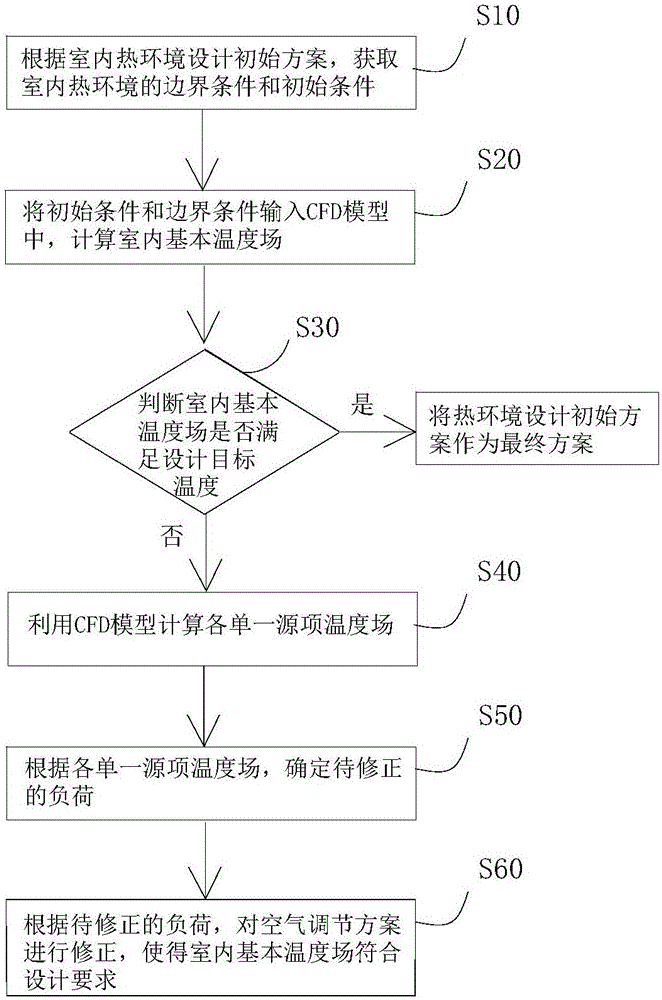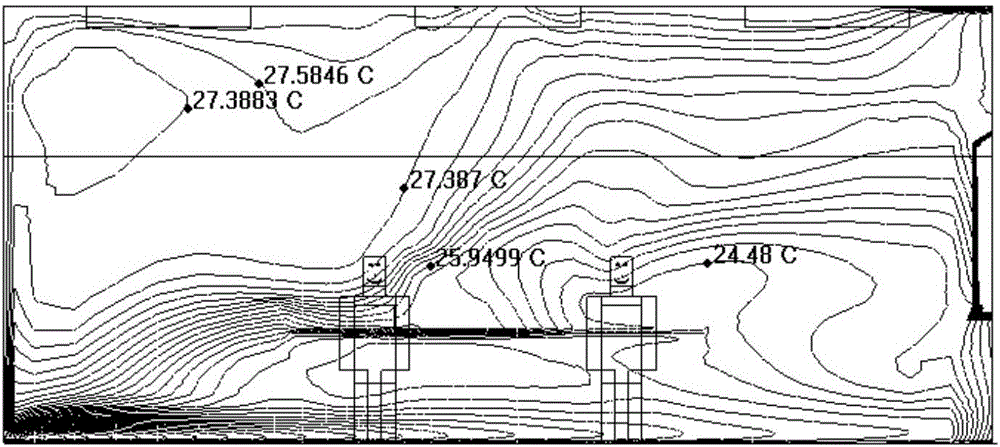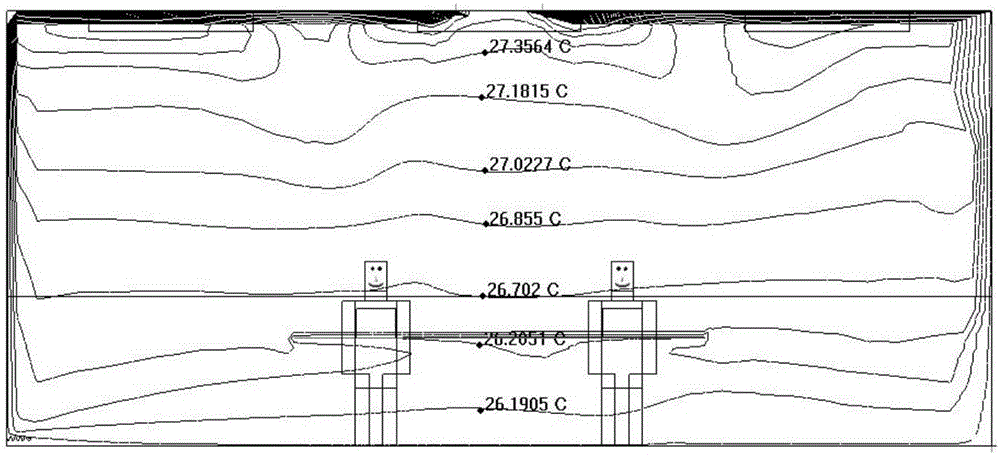Method for analyzing indoor thermal environment by utilizing computational fluid dynamics (CFD) model
An analysis method and thermal environment technology, applied in special data processing applications, instruments, electrical and digital data processing, etc., can solve problems such as untargeted basis, long time, etc., to reduce the amount of calculation, improve the analysis accuracy, and accurately correct Effect
- Summary
- Abstract
- Description
- Claims
- Application Information
AI Technical Summary
Problems solved by technology
Method used
Image
Examples
Embodiment 1
[0094] In the indoor thermal environment, the sub-area air-conditioning system is not divided.
[0095] The indoor design target temperature is set at 26°C. According to the initial scheme of indoor thermal environment design, the initial conditions and boundary conditions are input into the CFD model, and the basic indoor temperature field is calculated. The results are as follows: figure 2 shown. from figure 2 It can be seen that in the basic temperature field formed by the initial scheme of indoor thermal environment design, the temperature in some areas is higher than the design target temperature, and the temperature in some areas is lower than the design target temperature. from figure 2 It can be seen that more heat generated by internal heat sources, lighting equipment, and enclosure structures flows to the upper right space of the room, while the lower left space of the room gets more cooling.
[0096] A single heat source or a single cold source is used as the...
Embodiment 2
[0106] Set indoor thermal environment division and regional air-conditioning system, such as Figure 5 As shown, it is divided into two partitions, Partition 1 and Partition 2.
[0107] The indoor design target temperature is set at 26°C. According to the initial scheme of indoor thermal environment design, the initial conditions and boundary conditions are input into the CFD model, and the basic indoor temperature field is calculated. The results are as follows: Figure 5 shown. The sitting activity area is less than 1.3m, and the standing activity area is less than 2m. from Figure 5 For basic temperature field conditions, it is determined that the area for load correction (horizontal height 0.2m-1.3m) is located in Division 1.
[0108] In zoned air conditioning, an area is regarded as a thermal factor, all heat sources and cooling sources in this area are set with actual boundary conditions, and the entire area is a thermal factor. In turn, all the thermal factors in e...
PUM
 Login to View More
Login to View More Abstract
Description
Claims
Application Information
 Login to View More
Login to View More - R&D
- Intellectual Property
- Life Sciences
- Materials
- Tech Scout
- Unparalleled Data Quality
- Higher Quality Content
- 60% Fewer Hallucinations
Browse by: Latest US Patents, China's latest patents, Technical Efficacy Thesaurus, Application Domain, Technology Topic, Popular Technical Reports.
© 2025 PatSnap. All rights reserved.Legal|Privacy policy|Modern Slavery Act Transparency Statement|Sitemap|About US| Contact US: help@patsnap.com



